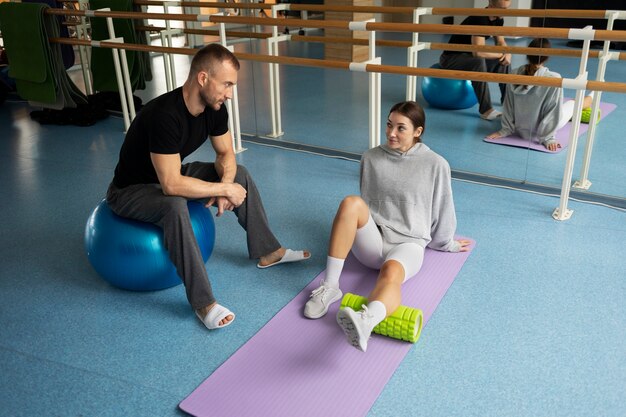
Sponsored article
Recovering from an injury can be a challenging journey, but with the right physical therapy techniques, it is possible to expedite the healing process significantly. This article delves into how these techniques not only aid in faster recovery but also enhance overall physical function and prevent future injuries. By understanding the science and methods utilized in physical therapy, patients can take proactive steps towards a healthier recovery journey.
Physical therapy plays a critical role in injury rehabilitation, offering a scientifically-backed approach to enhancing the healing process. At the core of this discipline is the use of targeted strategies that address both the symptoms and underlying causes of injuries. Techniques such as soft tissue mobilization and joint mobilization are employed to reduce pain, improve circulation, and restore flexibility and function. These methods, combined with customized exercise programs, help patients regain strength and mobility more swiftly. By understanding the body’s biomechanics, physical therapists at Springfield Physical Therapy & Wellness create personalized treatment plans that support natural healing processes and prevent future injuries. This comprehensive approach not only accelerates recovery but also empowers individuals to return to their daily activities with confidence, marking the significance of physical therapy in effective injury rehabilitation.
Key therapy techniques play a crucial role in facilitating faster recovery from injuries, ensuring a comprehensive approach to healing. Among these techniques, therapeutic exercises stand out by enhancing strength, flexibility, and endurance, ultimately speeding up recovery. These exercises are tailored to individual needs, aiming to restore function and prevent future injuries. Additionally, manual therapy is a hands-on approach that involves manipulating muscles and joints to reduce pain and improve mobility, which is essential for a swift recovery. Therapists may also employ modalities such as ultrasound and electrical stimulation to further accelerate healing. Ultrasound therapy helps in reducing inflammation and pain through deep tissue warming. On the other hand, electrical stimulation promotes muscle function and alleviates pain by delivering electrical impulses. These combined therapy techniques not only reduce recovery time but also enhance the overall rehabilitation process, leading to improved outcomes. Embracing these methods aids significantly in achieving faster, more effective recovery.
Re-injury prevention is a crucial aspect of the recovery journey, and physical therapy plays an essential role in educating patients on maintaining long-term health. By focusing on injury prevention, physical therapists equip patients with the knowledge and tools necessary to protect themselves from future harm. Understanding proper body mechanics is fundamental; therapists dedicate considerable effort to teaching patients how to move safely and efficiently during daily activities and exercise. By mastering these techniques, individuals can reduce the risk of placing undue stress on vulnerable areas. Moreover, physical therapy involves creating personalized exercise programs that address each patient’s specific weaknesses and vulnerabilities. These tailored programs aim to strengthen muscles, improve balance, and increase flexibility, all of which are pivotal in minimizing the chances of re-injury. Through continuous education and a well-structured regimen of targeted exercises, patients gain the confidence and capability to embrace an active lifestyle while safeguarding themselves against potential setbacks.